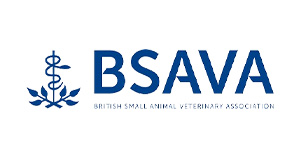No biosecurity measure is too costly, as long it is useful and effective
Publish on: May 2, 2023
Preventing the introduction and spread of disease is key to minimising losses on your farm and helping to control or even eliminate infectious diseases.
Biosecurity describes the measures that are taken to prevent the introduction of a disease into a population (your herd or flock), and biocontainment describes the measures taken to prevent or minimize the spread of an already-present disease agent within a population.
If you look at the diagram below, you can see different ways diseases can be introduced to and spread within a farm, as well as to other farms.
Disease agents can be introduced to a farm from an outside source. These sources include bought-in animals, visitors to farms, hired equipment, vehicles, etc.
Examples of ways to prevent disease introduction to your farm include maintaining a closed flock or herd, quarantining, and testing any incoming stock, purchasing only from farms with known disease status, having farm-supplied protective clothing (wellies and waterproofs or coveralls) for visitors, and having a designated parking area for visitors near the entrance to the farm and away from any stock (especially youngstock).
Once introduced to a farm, disease can also be spread within the farm between individual animals and groups. For example, many diseases such as Johnes, are transferred from adult cattle to youngstock.
Ways of preventing disease spread within your farm include good environmental and equipment hygiene practices, maintaining a standard work flow starting from the most susceptible animals (neonatal calves) and ending with the highest risk animals (sick cows), testing and identifying any affected animals, vaccinating, isolation of affected animals, good colostrum management with calves, etc.
Preventing spread of diseases to humans is also very important, as many diseases found within animal populations are considered zoonotic and can also affect people. Identification and management to reduce risk is essential.
In addition, some diseases can affect the environment in and surrounding the farm, creating a risk for spread in wildlife and reservoir for maintaining and spreading disease (ie. water supplies, wildlife population, sheds, etc.).
Finally, preventing the spread of disease to other farms is very important to slow and halt the spread of disease agents within an area.
Many diseases that have been eradicated in countries have relied not only on good biosecurity within a farm, but also reduced spread to other holdings. This biosecurity measure is both directly beneficial to your fellow farmers, but if others take care to implement these measures it is directly beneficial to your farm as well.
Examples of how you can do this include testing and determining of disease status of animals on your farm, maintain good fencing with adequate distance between your animals and those on neighbouring farms, appropriate slurry storage and spreading practices, cleaning and disinfecting any borrowed equipment, etc.
I would encourage anyone to sit down and chart out a cost-benefit analysis for implementing additional biosecurity measures on farm. Begin with simple, cost-effective measures such as education of farm staff, implementation of a standardized daily workflow on farm, and provision of farm-supplied protective clothing to visitors.
Remember, no biosecurity measure is too costly, as long it is useful and effective!












